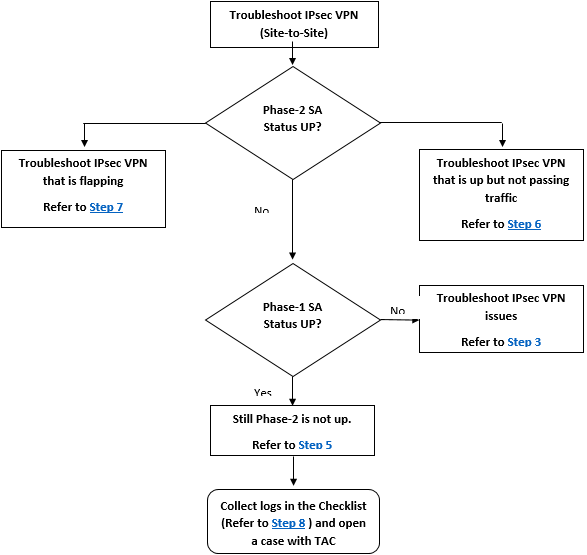Featured
Table of Contents
How To Fix Failed Vpn Connections - Troubleshooting Guide

The Routing and Remote Access snap-in lives within the Microsoft Management Console, known as the MMC. There are multiple ways to access the MMC. You can choose the console from the Start menu's Programs options, within the Administrative Tools folder within Windows server's Control Panel or by typing mmc at a command prompt.
As Tech, Republic's Brandon Vigliarolo shows within his video at the start of this post, the Solutions console displays the status of the Routing and Remote Gain access to entry. From within the Providers console and with the Routing and Remote Access entry highlighted, you can click Start the Service or right-click the entry and choose Restart.
Sometimes the VPN client and VPN server are set to utilizing different authentication techniques. Validate whether an authentication error is the problem by opening the server console. Another method of accessing the MMC is to type Control+R to open a command prompt in which you can type mmc and struck Get in or click OK.
If the entry isn't present, click File, select Add/Remove Snap-in, choose the Routing and Remote Access choice from the options and click Add, then OK. With the Routing and Remote Access snap-in included, right-click on the VPN server and click Properties. Examine the Security tab to verify the authentication method.
Troubleshoot The Genesys Cloud Webrtc Phone
Ensure the VPN client is set to the authentication method defined within the Security tab. Typically the items simply reviewed are accountable for many VPN connection rejection errors.
IP addresses are another essential aspect for which administration need to be properly set. Each Web-based VPN connection generally uses two different IP addresses for the VPN customer computer system. The first IP address is the one that was appointed by the client's ISP. This is the IP address that's utilized to develop the initial TCP/IP connection to the VPN server over the Internet.

This IP address typically possesses the very same subnet as the regional network and therefore allows the customer to communicate with the regional network. When you established the VPN server, you must set up a DHCP server to appoint addresses to clients, or you can produce a bank of IP addresses to appoint to clients straight from the VPN server.


If this option is picked and the reliable remote gain access to policy is set to permit remote gain access to, the user will have the ability to connect to the VPN. I have actually been not able to re-create the situation personally, I have actually heard rumors that a bug exists in older Windows servers that can trigger the connection to be accepted even if the effective remote gain access to policy is set to reject a user's connection.
How To Troubleshoot Vpns - Fix Common Vpn Problems!

Another common VPN problem is that a connection is effectively developed but the remote user is not able to access the network beyond the VPN server. Without a doubt, the most common cause of this issue is that approval hasn't been given for the user to access the whole network. To allow a user to access the entire network, go to the Routing and Remote Access console and right-click on the VPN server that's having the problem.
At the top of the IP tab is an Enable IP Routing check box. If this check box is made it possible for, VPN users will be able to access the remainder of the network, assuming network firewalls and security-as-a-service settings allow. If the checkbox is not picked, these users will have the ability to gain access to only the VPN server, but nothing beyond.
For instance, if a user is calling directly into the VPN server, it's generally best to configure a static route in between the client and the server. You can configure a static path by going to the Dial In tab of the user's properties sheet in Active Directory site Users and Computers and choosing the Apply A Static Route check box.
Click the Include Route button and then enter the location IP address and network mask in the area supplied. The metric should be left at 1. If you're utilizing a DHCP server to designate IP addresses to clients, there are a couple of other issues that might trigger users not to be able to go beyond the VPN server.
Technical Troubleshooting Tips
If the DHCP server designates the user an IP address that is already in use somewhere else on the network, Windows will find the conflict and prevent the user from accessing the rest of the network. Another typical problem is the user not getting an address at all. The majority of the time, if the DHCP server can't appoint the user an IP address, the connection will not make it this far.
254.x. x variety. If the customer is designated an address in a range that's not present within the system's routing tables, the user will be not able to navigate the network beyond the VPN server. Other problems can contribute to this issue, too. Ensure the resources the user is trying to access are really on the network to which the user is linking.
A VPN connection to the other subnet might, in truth, be needed. A firewall program or security as a service option could likewise be to blame, so don't forget to evaluate those options' settings, if such elements are present between the VPN server and the resources the user looks for to reach.
The first possibility is that one or more of the routers involved is performing IP packet filtering. I suggest inspecting the customer, the server and any machines in between for IP packet filters.
Latest Posts
Common Vpn Error Codes And Solutions For Windows 11/10
24 Best Vpn Services Available In 2023
What's The Difference Between Vpn & Ip Vpn?